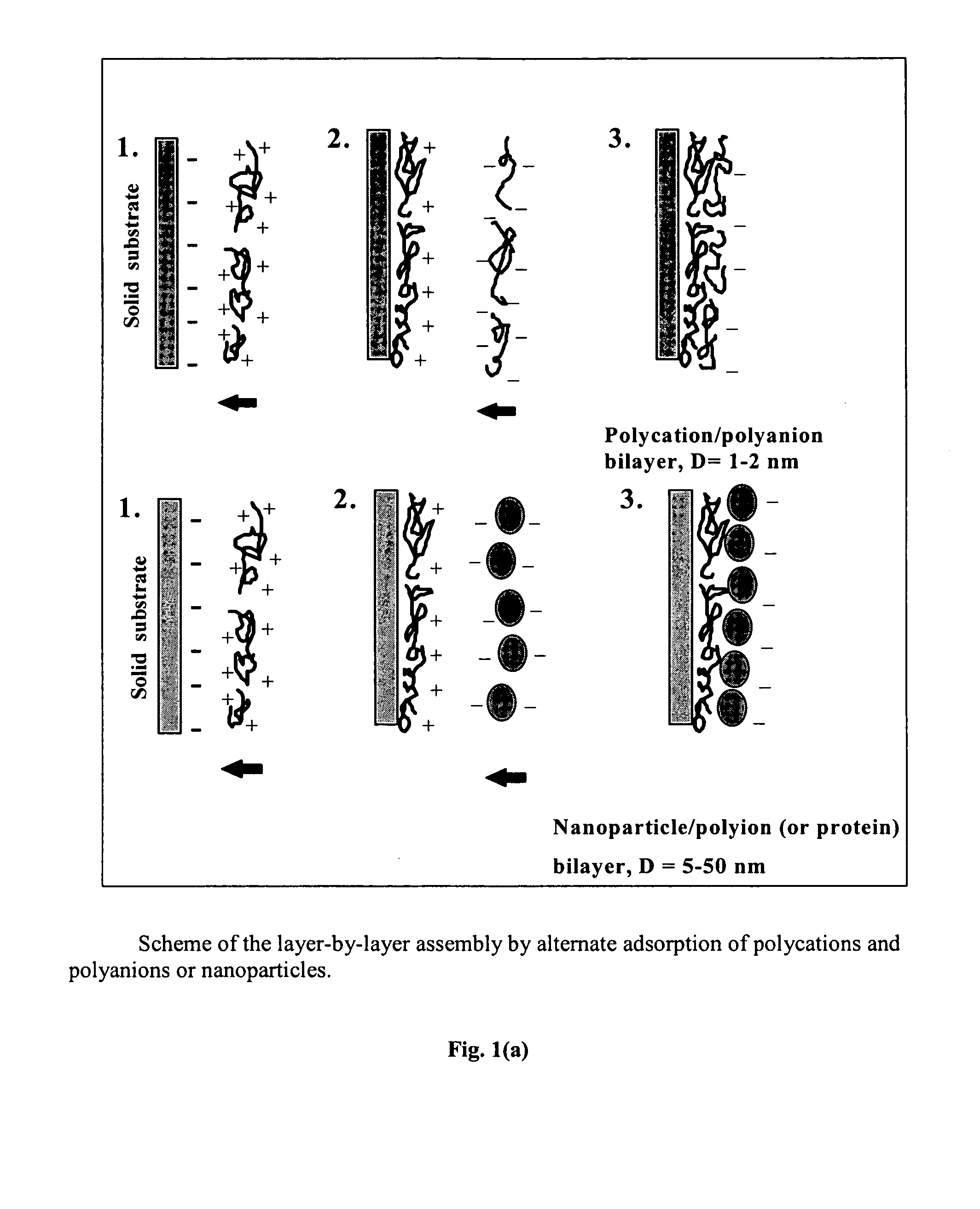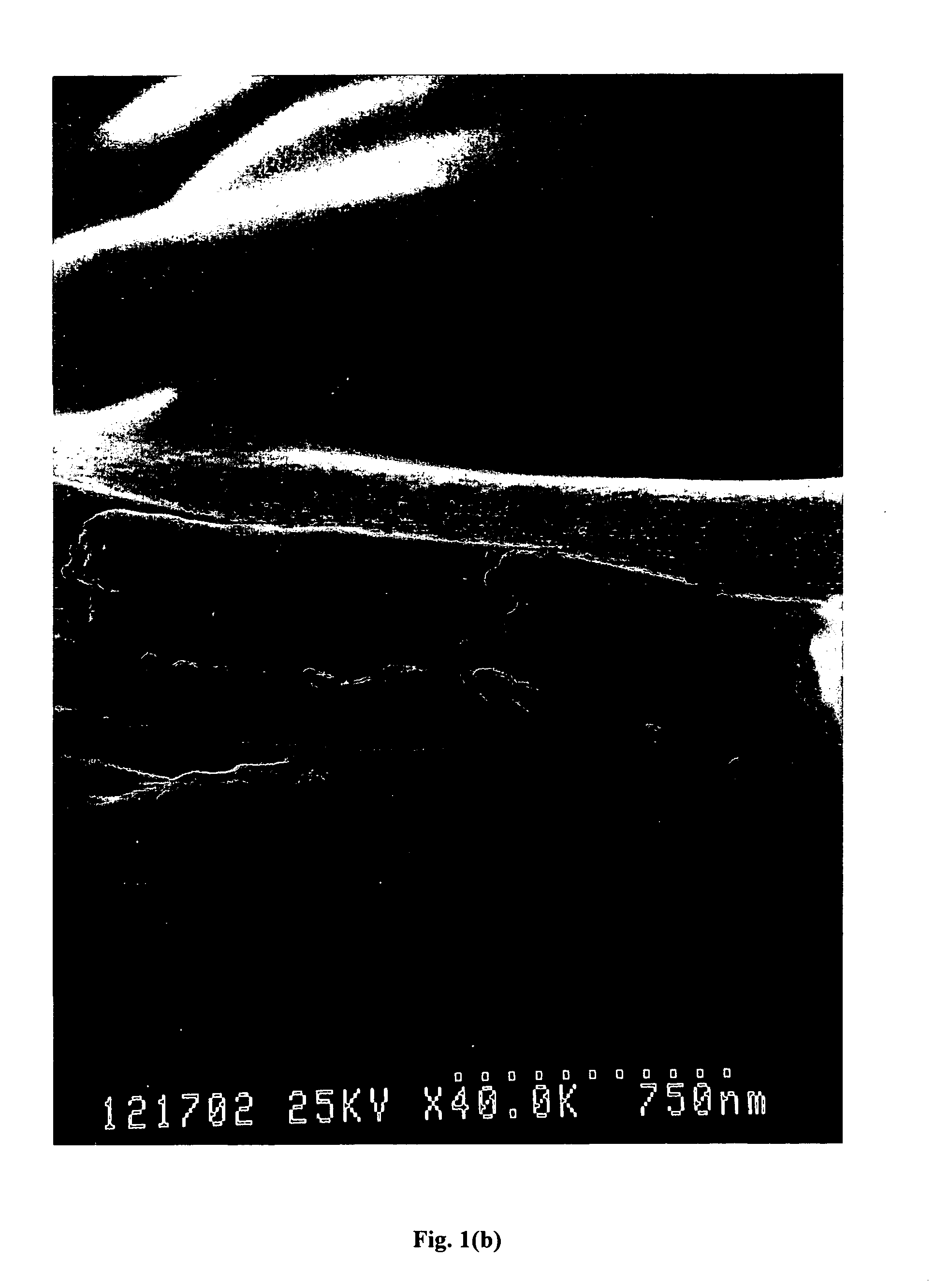Layer-by-layer nanocoating for paper fabrication
- Summary
- Abstract
- Description
- Claims
- Application Information
AI Technical Summary
Benefits of technology
Problems solved by technology
Method used
Image
Examples
Embodiment Construction
[0026]The first step of the method of this invention involves forming a pulp of lignocellulose fibers. A slurry of between approximately 0.5 and 15% by weight solids is prepared by conventional paper manufacturing techniques using virgin lignocellulose fibers and / or broken (mill broke) recycled fibers. The slurry is preferably an aqueous slurry. In addition to virgin lignocellulose and / or broken recycled fibers the initial slurry may also contain various additives and other chemicals often used in the paper making industry and beneficial to the paper manufacture process. The slurry may also contain mixtures of synthetic fibers in various proportions. The second step comprises the nanocoating of the pulp by alternatively impregnating the pulp fibers with multiple consecutively-applied layers of oppositely-charged nanoparticles and polymers. Oppositely-charged nanoparticles are inorganic solid materials. They differ from polymers in that they preserve their shape and dimensions, and p...
PUM
| Property | Measurement | Unit |
|---|---|---|
| Fraction | aaaaa | aaaaa |
| Fraction | aaaaa | aaaaa |
| Fraction | aaaaa | aaaaa |
Abstract
Description
Claims
Application Information
 Login to View More
Login to View More - R&D
- Intellectual Property
- Life Sciences
- Materials
- Tech Scout
- Unparalleled Data Quality
- Higher Quality Content
- 60% Fewer Hallucinations
Browse by: Latest US Patents, China's latest patents, Technical Efficacy Thesaurus, Application Domain, Technology Topic, Popular Technical Reports.
© 2025 PatSnap. All rights reserved.Legal|Privacy policy|Modern Slavery Act Transparency Statement|Sitemap|About US| Contact US: help@patsnap.com



